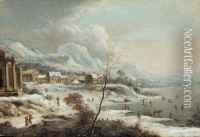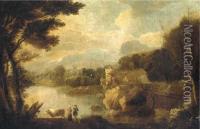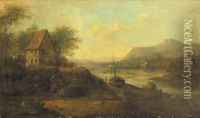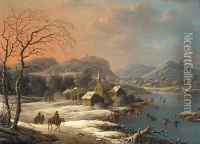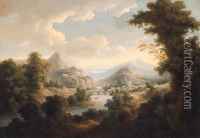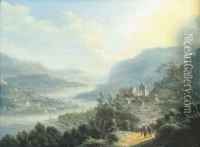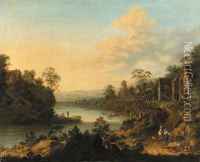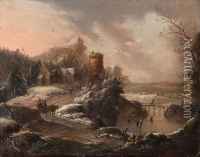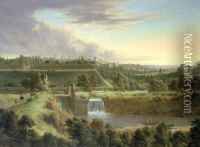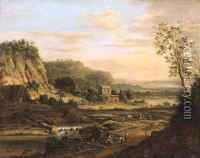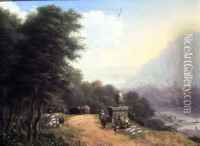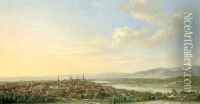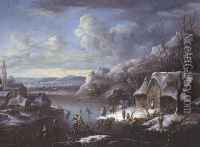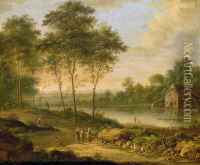Johann Christian Vollerdt or Vollaert Paintings
Johann Christian Vollerdt, also known as Johann Christian Vollaert, was an 18th-century German landscape painter born in 1708 in Leipzig. He was known for his picturesque landscapes, which often depicted idyllic scenes with classical ruins and small figures, illustrating the influence of the Dutch Italianate style.
Vollerdt received his initial training in art in his hometown of Leipzig. He later moved to Dresden, where he continued his studies and was exposed to the works of other landscape painters, which had a significant influence on his style of painting. Dresden, at the time, was a hub for artists and intellectuals, providing Vollerdt with an environment conducive to artistic development.
During his career, Vollerdt developed a style that embraced both the grandeur and the detail of nature. He was adept at creating atmospheric effects and had a particular talent for depicting different qualities of light, which added a sense of realism to his works. His landscapes were composed with a delicate balance between the natural elements and the human presence, often including small figures to give scale and life to his scenes.
Vollerdt's landscapes were appreciated for their serene beauty and were sought after by collectors and art lovers of his time. He contributed to the genre of landscape painting by combining elements from the Dutch landscape tradition with the emerging sensibilities of the picturesque, which would later become more prominent in European art.
Despite his skill and the quality of his work, Johann Christian Vollerdt is not as well-known as some of his contemporaries. However, he remains a respected figure among those familiar with German landscape painting of the 18th century. His paintings can be found in various art collections and museums, serving as a testament to his artistic contribution.
Johann Christian Vollerdt passed away in 1769. While his name may not be as recognizable as some of his peers, his work continues to be appreciated by connoisseurs and scholars of German art history, and he is remembered for his contributions to the development of landscape painting during his era.
